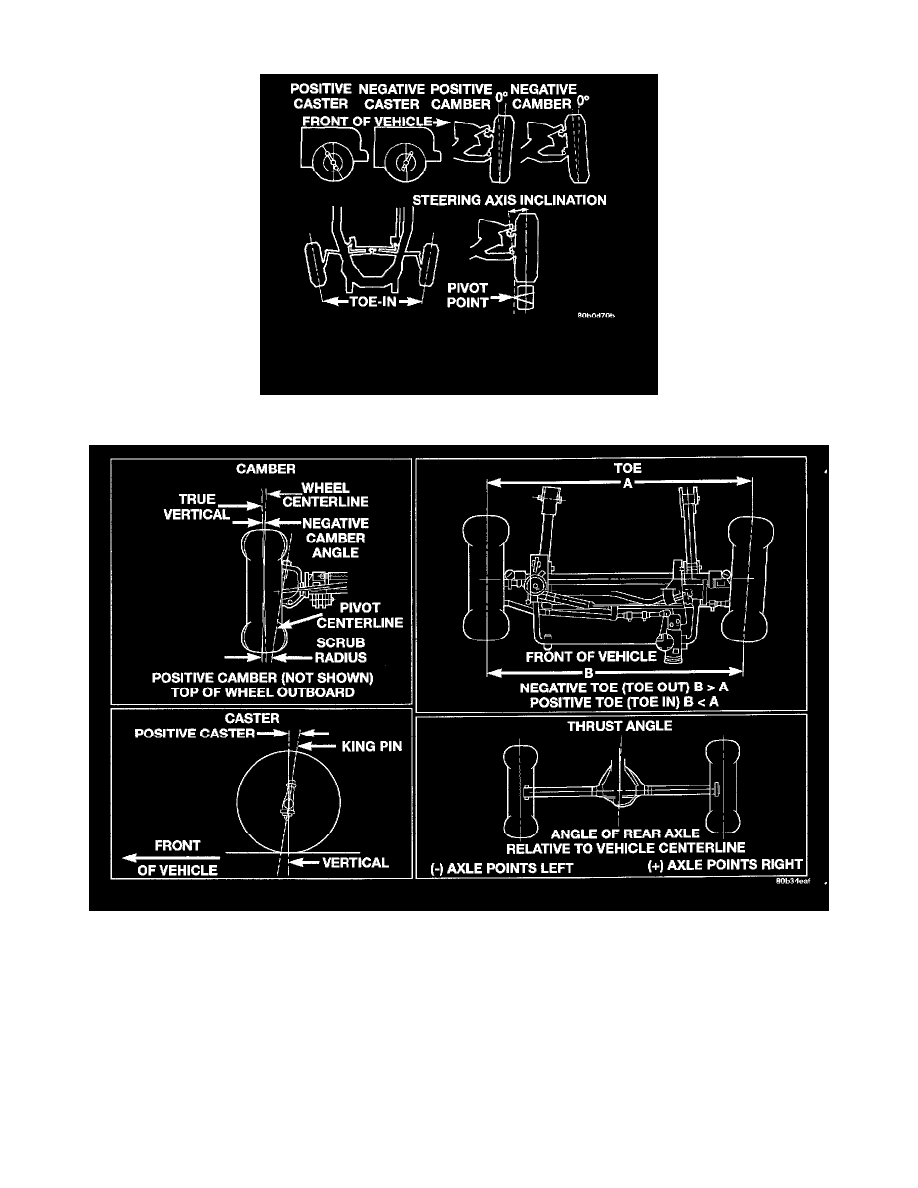RAM 1500 Truck 2WD V8-5.9L VIN Z LDC (1999)

Alignment: Description and Operation
Alignment Angles - Independent Front Suspension
Alignment Angels - Link/Coil
Wheel alignment is the positioning of the wheels in relation to the vehicle. This is accomplished through suspension and steering linkage adjustments.
An alignment is essential for efficient steering, good directional stability and to minimize tire wear. The most important measurements of an alignment
are caster, camber and toe position.
-
CASTER is the forward or rearward tilt of the steering knuckle from vertical. Tilting the top of the knuckle rearward provides positive caster.
Tilting the top of the knuckle forward provides negative caster. Caster is a directional stability angle which enables the front wheels to return to a
straight ahead position after turns.
-
CAMBER is the inward or outward tilt of the wheel relative to the center of the vehicle. Tilting the top of the wheel inward provides negative
camber. Tilting the top of the wheel outward provides positive camber. Incorrect camber will cause wear on the inside or outside edge of the tire.
-
WHEEL TOE POSITION is the difference between the leading inside edges and trailing inside edges of the front tires. Incorrect wheel toe
position is the most common cause of unstable steering and uneven tire wear. The wheel toe position is the final front wheel alignment adjustment.
